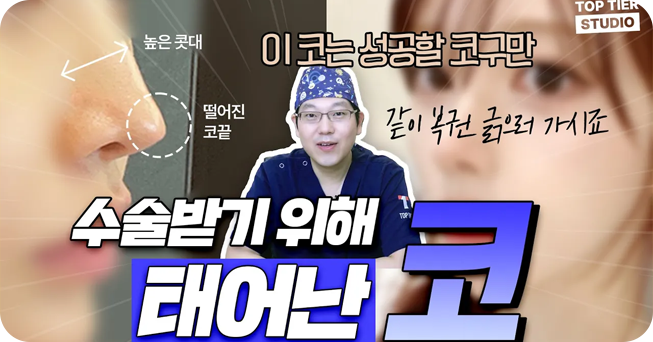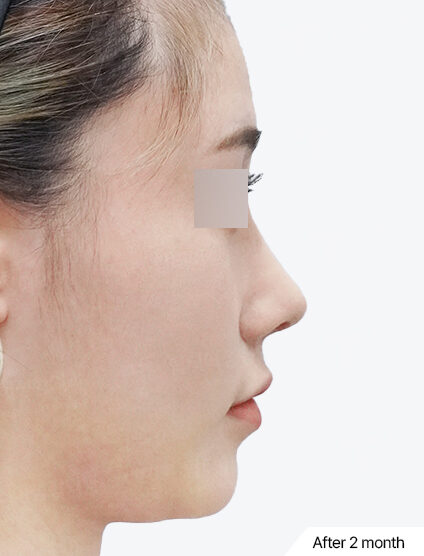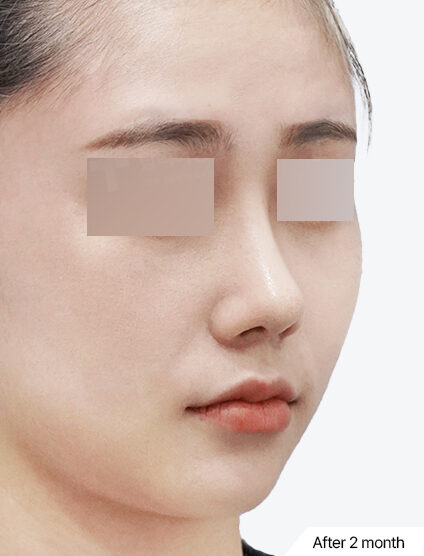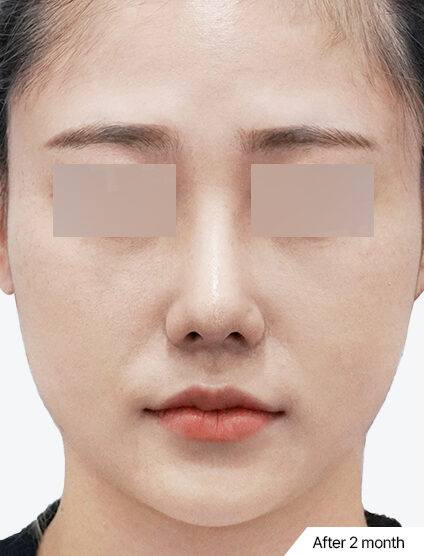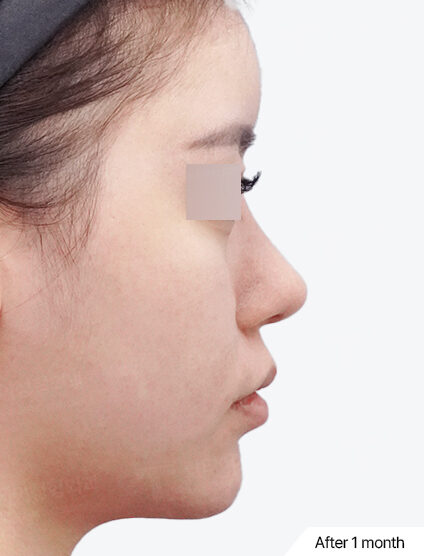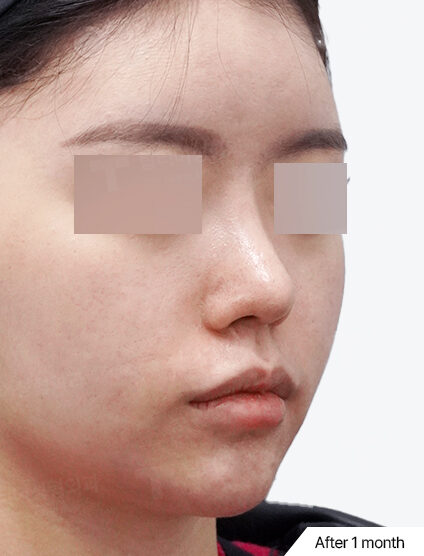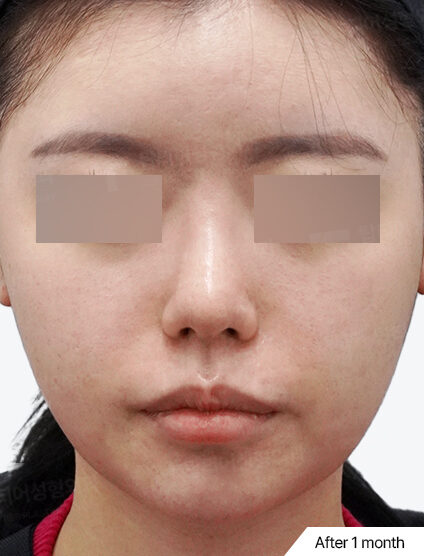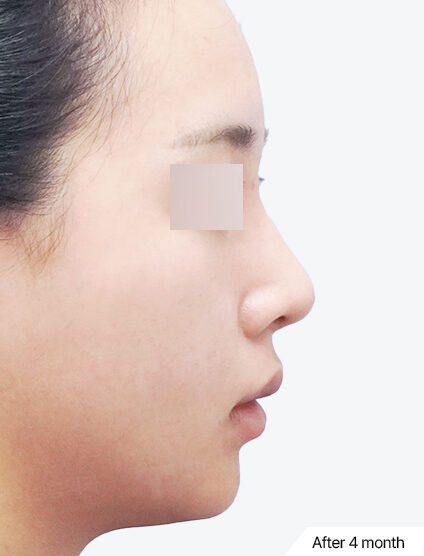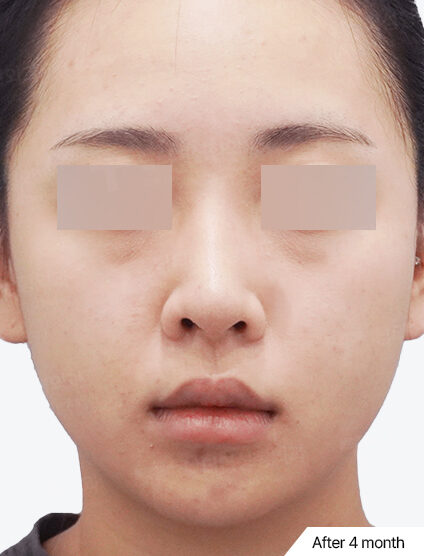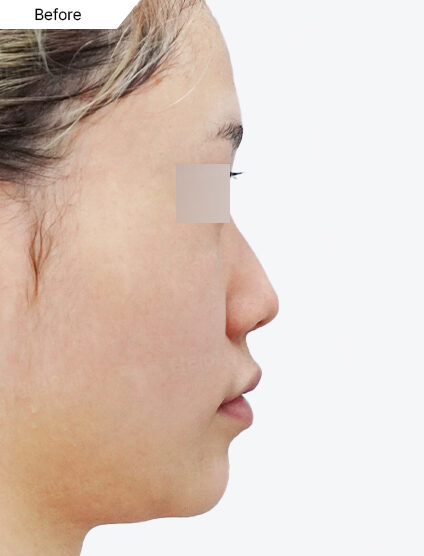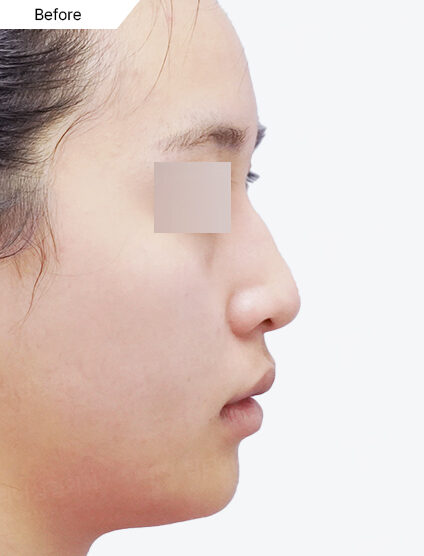Create Your Ideal Facial Balance

Balancing Aesthetics and Functionality
TOP TIER Rhinoplasty by Type
TOP TIER focuses on enhancing your nose’s angles, height, and shape,
all of which define your image and overall impression, to create the perfect balance for your face.
- #BoostAesthetics
- #EnhanceFunctionality
- #ForABalancedLook
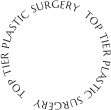

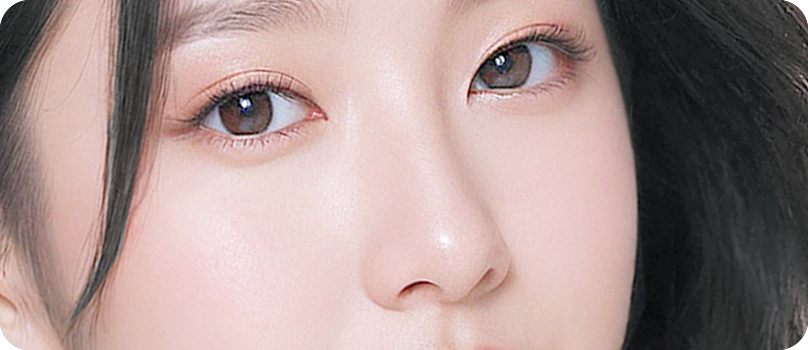
SURGERY INFORMATION
Procedure Time
1 to 2 hours
Anesthesia
Sedation
Hospitalization
Not required
Stitch Removal
7 days after surgery
Recovery Time
1 to 2 weeks for normal daily activities
Procedure Time
1 to 2 hours
Anesthesia
Sedation
Hospitalization
Not required
Stitch Removal
7 days after surgery
Recovery Time
1 to 2 weeks for normal daily activities
What Are the Ideal Angles and Proportions for a Beautiful Nose?
01
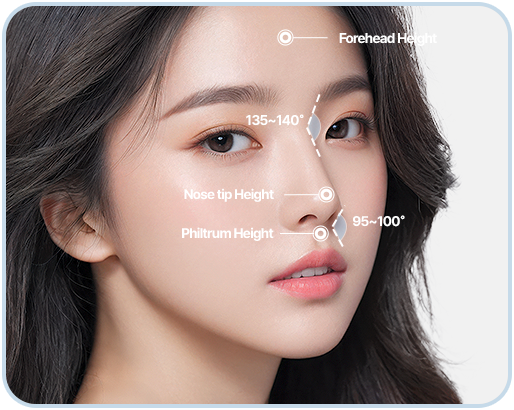
Balanced Angles
The angle between the nose tip and the upper lip
should bebetween 95 and 110 degrees
The angle between the nasal bridge and the forehead
should be between 120 and 140 degrees
02
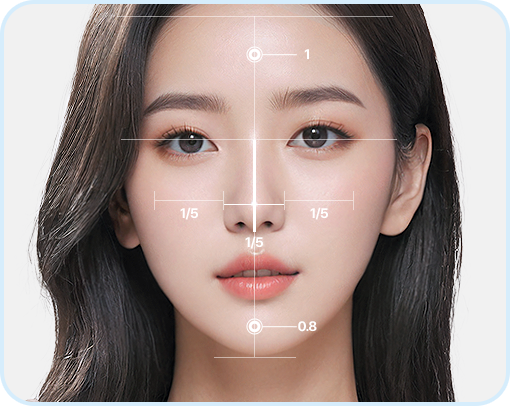
Harmonious Proportions
Horizontal division: 1:1:0.8
Vertical division: 1/5
TOP TIER Rhinoplasty by Type
Low Nose
The characteristics of the East Asian facial structure mean that he nasal bridge between the eyes is typically lower, giving the face a flat appearance.
Using implants and autologous tissue, we can create a more dimensional, sculpted look.
- 01When the nasal bridge is low
- 02When the distance between the eyes appears too wide
- 03When the nose tip is blunt or drooping
- 04When the nose appears flat and gives a dull impression
- 05When the face lacks overall dimension
TOP TIER Rhinoplasty for Low Nose
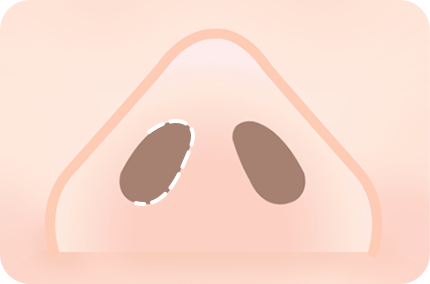
Closed Rhinoplasty
Incisions are made inside the nostrils
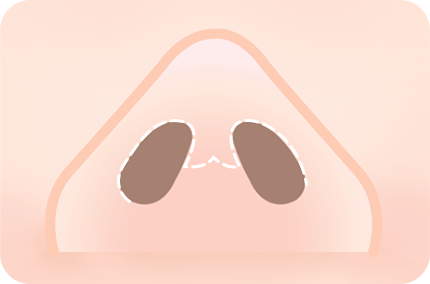
Open Rhinoplasty
Incisions are made inside the nostrils
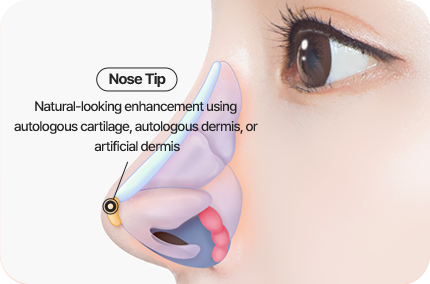
Implants and Autologous Tissue Insertion
We design a custom implant (silicone or Gore-Tex) or use autologous tissues (cartilage, fascia, dermis, or fat) to achieve harmony between the forehead and nose.

Closed Rhinoplasty
Incisions are made inside the nostrils

Open Rhinoplasty
Incisions are made inside the nostrils

Implants and Autologous Tissue Insertion
We design a custom implant (silicone or Gore-Tex) or use autologous tissues (cartilage, fascia, dermis, or fat) to achieve harmony between the forehead and nose.
Short Nose (Upturned Nose)
This procedure is for improving a nose that is too short for the face,
and that has an upturned tip that causes the nostrils to be overly visible when viewed from the front.
- 01When the nose appears flat and short compared to the face
- 02When the nose tip is lifted, making the nostrils appear wider
- 03When the nose is disproportionately short in relation to the face
- 04When scarring or contraction occurs due to implants after a previous rhinoplasty
TOP TIER Rhinoplasty for Short Nose (Upturned Nose)
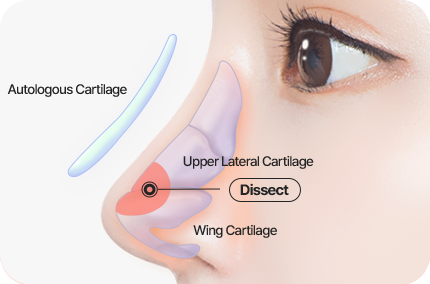
Cartilage Dissection and Separation
The cartilage around the nostrils is dissected from the surrounding tissue and separated from the cartilage of the nasal bridge for extension.
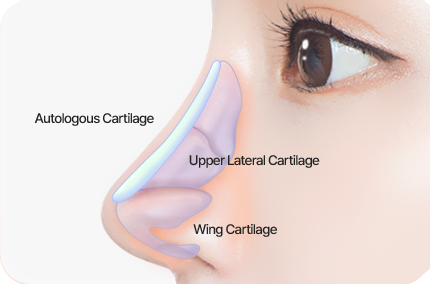
Correction with Strong Cartilage
To maintain the extended shape, we use septal or ear cartilage for support. In more severe cases or revisional surgery, rib cartilage is used to provide stronger support, preventing future deformation.

Cartilage Dissection and Separation
The cartilage around the nostrils is dissected from the surrounding tissue and separated from the cartilage of the nasal bridge for extension.

Correction with Strong Cartilage
To maintain the extended shape, we use septal or ear cartilage for support. In more severe cases or revisional surgery, rib cartilage is used to provide stronger support, preventing future deformation.
Long Nose (Arrow-shaped Nose)
This nose type features a downward-pointing tip with upward-pointing nostrils,
creating an arrow-like shape that gives a strong impression and can make the face appear older.
- 01When the nose is long, making the face appear elongated
- 02When the muscles at the nose tip are overly developed
- 03When the nose tip points downward, making the nostrils less visible
- 04When the nose tip droops excessively when smiling<966/>
TOP TIER Rhinoplasty for Long Nose (Arrow-shaped Nose)
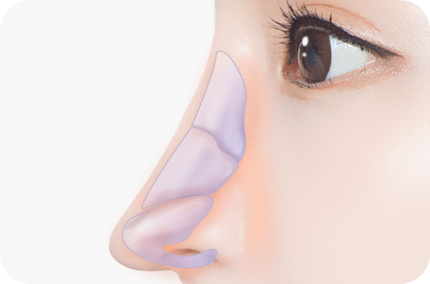
Design
The length and downward tip of the nose are redesigned for a more balanced and proportional appearance.
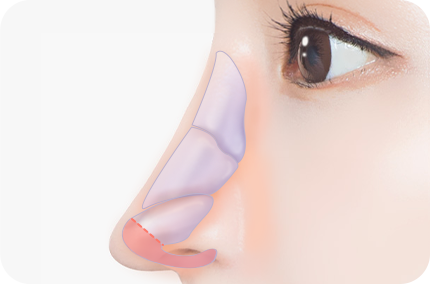
Position Correction
The cause of the drooping nose tip is addressed by removing part of the cartilage and precisely adjusting its position.
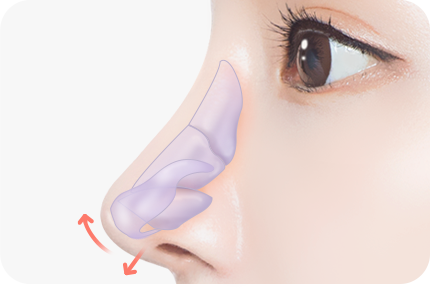
Cartilage Fixation
After repositioning, autologous cartilage is used to firmly stabilize the corrected nose tip.

Design
The length and downward tip of the nose are redesigned for a more balanced and proportional appearance.

Position Correction
The cause of the drooping nose tip is addressed by removing part of the cartilage and precisely adjusting its position.

Cartilage Fixation
After repositioning, autologous cartilage is used to firmly stabilize the corrected nose tip.
Bulbous Nose
A blunt, wide nose tip can give the face a flat and unsophisticated appearance.
By narrowing the nasal base and improving the balance with the rest of the face, we can create a more refined, elegant look.
- 01When the nose tip is blunt
- 02When the nostrils are wide
- 03When the width of the nose appears to be too wide
- 04When the columella is wide and flat
TOP TIER Rhinoplasty for Bulbous Nose
When the Nasal Wing Cartilage is Wide or Flared
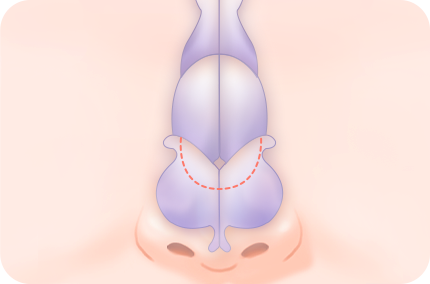
Cartilage Removal
If the nasal wing cartilage is too large and wide, it is trimmed.
If the cartilage is flared, it is reshaped for a smoother contour.
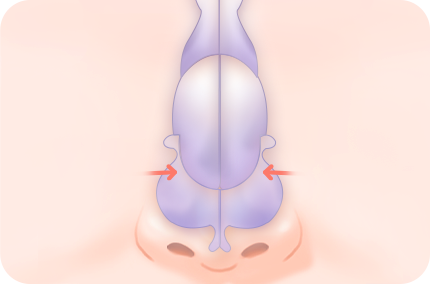
Cartilage Fixation
The flared cartilage on both sides is brought together.
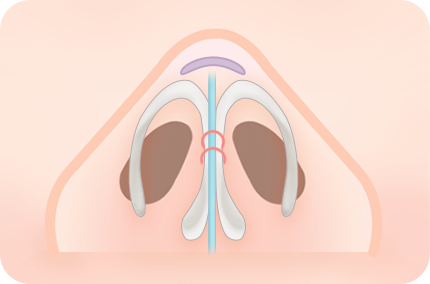
Cartilage Suturing
The reshaped cartilage is securely sutured.

Cartilage Removal
If the nasal wing cartilage is too large and wide, it is trimmed.
If the cartilage is flared, it is reshaped for a smoother contour.

Cartilage Fixation
The flared cartilage on both sides is brought together.

Cartilage Suturing
The reshaped cartilage is securely sutured.
When There is Excess Fat, Muscle, and Thick Skin on the Nose
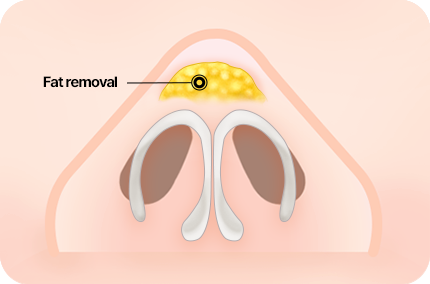
Cartilage Shaping
To reduce the volume at the nose tip, we remove some of the soft tissue and fat. If the nasal cartilage is large, we trim and reshape the cartilage to reduce the volume at the tip.

Cartilage Suturing
After performing cartilage grafting to provide support, we carefully gather the cartilage for correction. If the cartilage of the nose itself is large, we adjust the height of the nose tip to prevent scar tissue from forming again.

Cartilage Shaping
To reduce the volume at the nose tip, we remove some of the soft tissue and fat. If the nasal cartilage is large, we trim and reshape the cartilage to reduce the volume at the tip.

Cartilage Suturing
After performing cartilage grafting to provide support, we carefully gather the cartilage for correction. If the cartilage of the nose itself is large, we adjust the height of the nose tip to prevent scar tissue from forming again.
Crooked Nose
A crooked nose is a nose in which the line from the tip to the glabella is not straight.
A crooked nose can lead to chronic nasal congestion, rhinitis, sleep disorders, and other issues, making correction necessary.
- 01When the line of the nasal bridge isn’t straight to the tip
- 02When the nose is bent in one direction
- 03When there is imbalance between the left and right sides of the nose
- 04When a crooked nose affects the function of the nose
- 05When trauma or injury has caused the nose to become crooked
TOP TIER Rhinoplasty for Crooked Nose
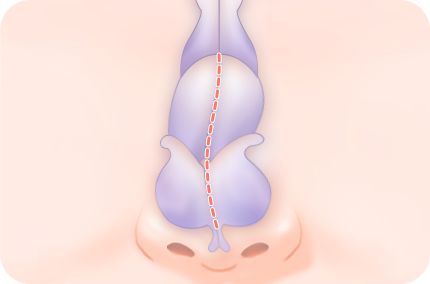
Cartilage Osteotomy
Both sides of the crooked part of the nose are carefully cut.
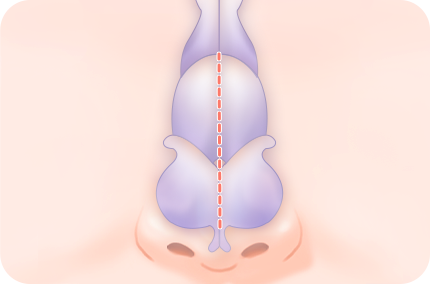
Cartilage Shaping for Symmetry
The cartilage on both sides is reshaped symmetrically to create a straight nose line.

Cartilage Osteotomy
Both sides of the crooked part of the nose are carefully cut.

Cartilage Shaping for Symmetry
The cartilage on both sides is reshaped symmetrically to create a straight nose line.
Straightening a Crooked Nose
Since most crooked noses involve deformities in the nasal bone, cartilage, and septal cartilage,
all these structures need to be corrected when straightening the nose to achieve the best possible result
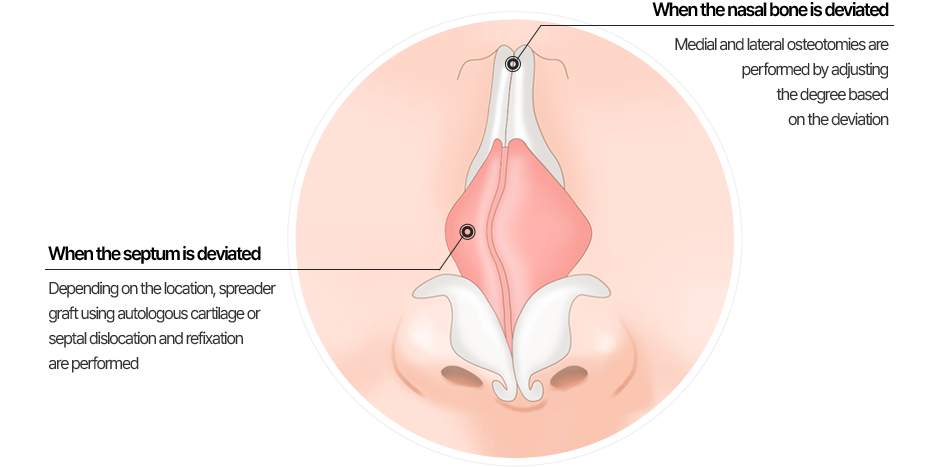
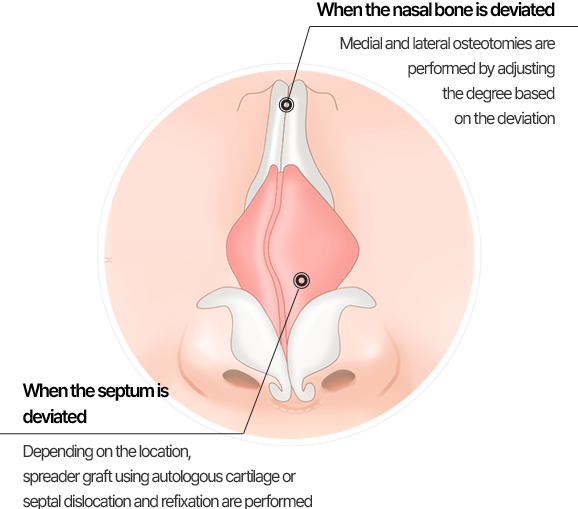
Hooked Nose
A hooked nose features a protruding nasal bridge and a drooping tip, giving the appearance of an eagle’s beak.
This type of nose can make a person look older and stubborn.
- 01The protruding nasal bone is removed to prevent recurrence
- 02A smooth and natural nasal bridge line is created
- 03The hump is removed while maintaining an ideal nose shape
- 04Fine suturing is performed inside the nostrils to avoid visible scars
TOP TIER Rhinoplasty for Hooked Nose
When the Hump is Not Severe
If the nasal bridge is slightly protruding, simply smoothing out the area can effectively correct the hooked nose.
This is a straightforward procedure often performed when the nasal bridge is moderately high. In some cases, implants may be used to shape the bridge or nose tip, depending on the situation.
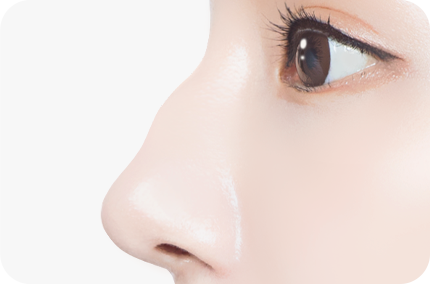
Before Surgery
A nose with
a slightly protruding bridge.
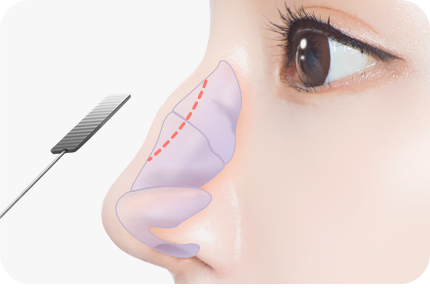
Hump Removal
The protruding hump is removed through an incision made inside the nose. If needed, custom implants may be inserted to enhance the nasal bridge and tip.
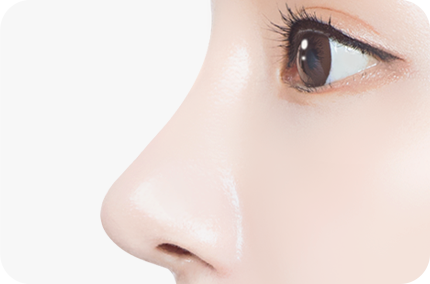
After Surgery
A smooth nasal bridge and a softer, more balanced appearance.

Before Surgery
A nose with
a slightly protruding bridge.

Hump Removal
The protruding hump is removed through an incision made inside the nose. If needed, custom implants may be inserted to enhance the nasal bridge and tip.

After Surgery
A smooth nasal bridge and a softer, more balanced appearance.
When the Hump is Severe
When a hump is particularly pronounced, both cartilage and bone must be removed.
Since the nose tip is often relatively low and drooping,
we use autologous cartilage to create support and lift the tip. The widened nasal bone is also carefully osteotomized and repositioned inward for correction.
In some cases, implants are used, and autologous tissue is utilized to refine the shape of the nose tip.

Before Surgery
A nose with
a slightly protruding bridge.
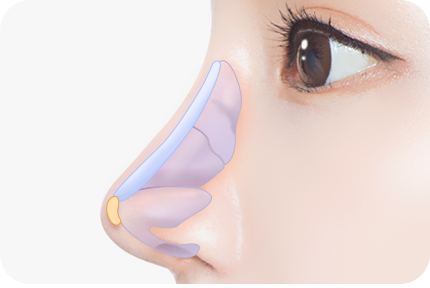
Hump Removal
The nasal bone and cartilage are reshaped, and if the nose is low, implants are used to enhance the bridge and tip.

After Surgery
A smooth nasal bridge and a softer, more balanced appearance.

Before Surgery
A nose with
a slightly protruding bridge.

Hump Removal
The nasal bone and cartilage are reshaped, and if the nose is low, implants are used to enhance the bridge and tip.

After Surgery
A smooth nasal bridge and a softer, more balanced appearance.
BEFORE & AFTER
Please note that post-treatment issues, such as bleeding, infection, and inflammation, may vary among individual patients.





















